Way back, even before gaming laptops became mainstream, I kept hearing that if it is the best in portable PC gaming experience one wants, then Alienware is the brand to go for. This statement holds true even today as many more companies flood their products in the Indian PC market for high-performance gaming. Alienware, owned by Dell, has a reputation for carving out a niche in the laptop segment. The name was and is synonymous with gaming, and its products are not exactly cheap. However, as competition grows, Alienware has had to adapt to the changing needs of the gaming community in the Indian market. Brands like ASUS’ ROG lineup, MSI’s Stealth series, Lenovo’s Legion series, and more have been putting out their latest and greatest devices which makes for a good competitive market space.

The Alienware M15 R3 is the latest from the company and it is powered by the latest 10th-gen Intel H-series CPUs and NVIDIA’s RTX GPUs. With the M15, Alienware has tried to make a compact, portable gaming machine that has given equal weightage to other use cases such as creative and professional use. There are two display variants for the device, one that sports a 4K OLED 60Hz panel and another that offers an FHD panel with a 300Hz refresh rate, and I have received the former for review. With a starting price of Rs 1,99,999, the Alienware M15 R3 is a device that is going to be quite heavy on your wallet. So what sets it apart? Let’s find out in this detailed review of the device.
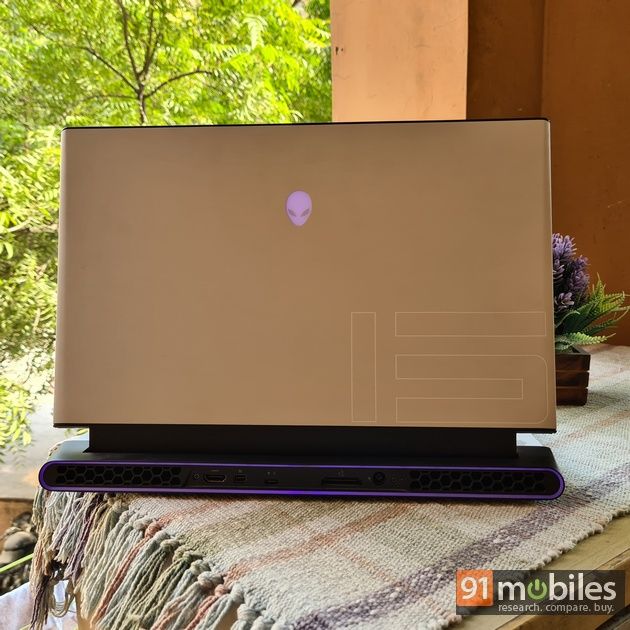
Design, build and display
If there is one thing that Alienware has always gotten right, it is the gaming aesthetics on all its devices. The M15 R3 looks straight out of a cyberpunk movie. The hexagonal openings on the back for the thermal vents basking in RGB glory and matching design for the speakers up front make for great eye candy. A light-grey matte finish greets my touch on the palm rest and the lid, while the hinge is a much darker shade of black. All of it goes well with the aluminium unibody design which surprisingly doesn’t add a lot of weight to the device and also makes it currently the thinnest 15-inch laptop from Alienware. At 2.1 kgs the laptop doesn’t feel very bulky in the bag, although adding the humongous charging brick alongside will make the setup slightly heavy. However, the payoff is huge in terms of the performance and graphical capabilities you are getting. Considering the monstrous Area 51m from Alienware, the M15 R3 looks like a sleek tablet packed with almost the same internals.
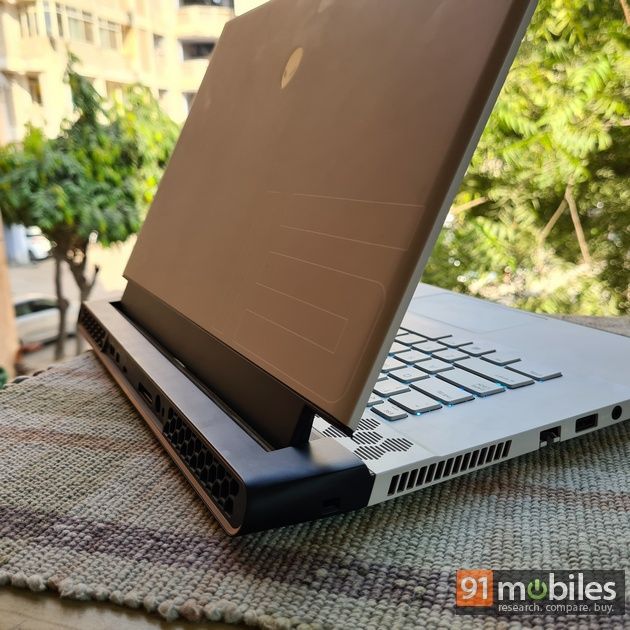
The Alienware logo is visible almost instantly at the bottom of the display when the lid is opened. The hinge is placed an inch forward from the back, quite like the Legion 7i (review), to make a lot of space for the heating vents and ports. It’s also designed in a way to give the impression that the display is floating on the bottom two sides. The rigid design on the hinge is also flexible enough to lift the lid with just one finger without having to make any jerky movements. The Alienware logo is RGB lit on the lid as is the power button, along with the halo surrounding the heating vents at the back. All the lighting is configurable via the Alienware Command Centre app under the FX tab. The quad-speaker setup sees the hexagonal openings above the keyboard paired with two tweeters below the trackpad which deliver a quality audio experience. Apart from that Alienware has also updated the coating on the R3’s chassis from the R2 to make the former more resistant to smudging and staining. The Alienware M15 R3 instantly sets itself apart with a slick design that has been engineered to grab eyeballs. This last part can also be taken in the literal sense as the sensors below the Alienware logo have Tobii Eye-tracking technology which monitors the position of your eyeballs. Basically, if you are looking away from the screen it will dim the display and will instantly bring up the default brightness when you look towards it. Quite nifty indeed.
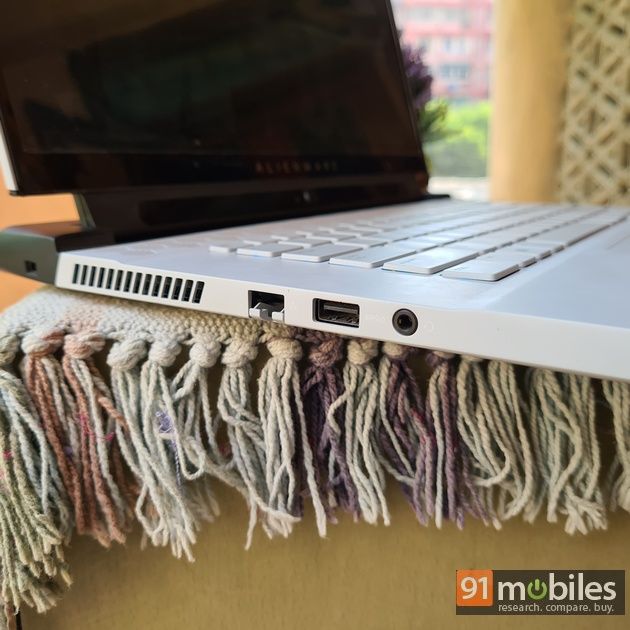
Being at the higher end of the PC spectrum, a bevy of ports and connectivity options make their way on to the Alienware M15 R3. At the back of the device is an HDMI 2.0 port, a Mini DisplayPort, a Thunderbolt 3.0 port, and a proprietary port for the M15’s graphics amplifier along with the power inlet. On the left and right there are a total of three USB A ports with USB 3.0 standard, an Ethernet port, a 3.5mm headphone jack, and a microSD card reader. As for wireless options, you have your standard and latest WiFi 6 and Bluetooth 5.1 capabilities.
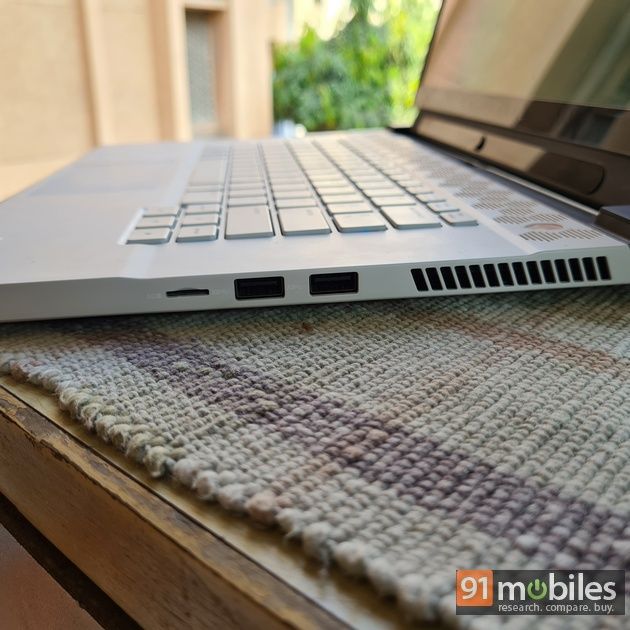
It wouldn’t be a stretch to say that the M15 R3 has perhaps the most colour accurate display I have laid my eyes on in the laptop segment. Creators generally prefer the MacBook Pro for fine-tuning colour correction in images and videos, but I’m quite sure they have never come across this beautiful 15-inch 4K UHD OLED panel. Most displays in the PC segment are IPS LCD panels for keeping costs in check, but the OLED nature is apparent instantly when you turn on the display. The most striking feature is the deep blacks that accentuate the bright colours popping on the screen, making for a wonderful viewing experience. The cherry on top is the peak 400nits of brightness which makes it an easy job to use the laptop outdoors in harsh sunlight. Being an OLED display, the viewing angles are also superb.
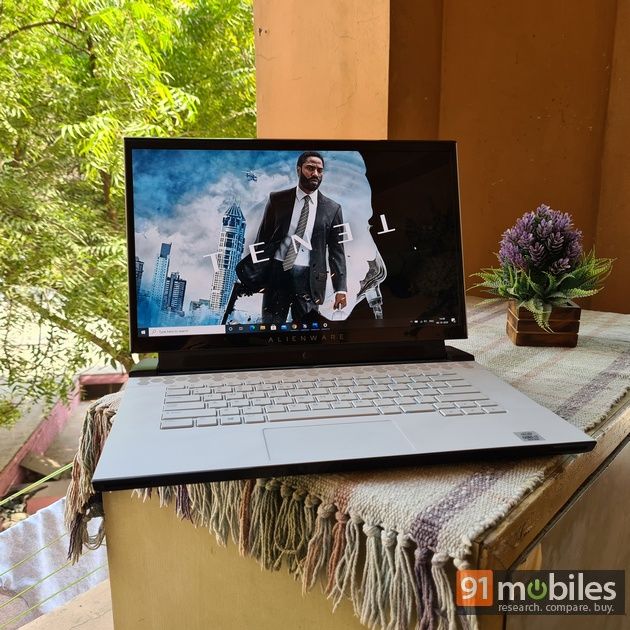
However, while a 4K display locked at 60Hz might be good for creative work, it just doesn’t cut it for gaming. The latter group, for whom the laptop is arguably made, will benefit from the 300Hz LCD panel at FHD resolution. This is because pushing more frames per second matters more in gaming rather than pushing more pixels. Apart from that the thin chassis of laptops is generally not designed to render games in 4K. More on that later. Bottom line is that if you are getting the M15 R3 for gaming be sure to opt for the 300Hz FHD variant and if if you want to do more of photo editing and need, in my opinion, one the most colour accurate panel in the market, go for the 4K OLED variant.
Keyboard and trackpad
The M15 R3 has one of the finer keyboards out in the market that is good not only for typing but obviously also for gaming. Of course, the entire keyboard is RGB backlit and in fact, you can customise different colours for each individual key on the FX tab inside the Alienware Command Centre app. There is zero flex of the keyboard while typing owing to the well built, sturdy chassis design, and the travel on each key is about 1.7mm. There is that satisfying typing sound when each key clicks, and depending on your preference you can either like it or hate it. However, for users more accustomed to a full-sized keyboard, which is generally what a 15-inch laptop offers, there will be a learning curve. There is no numpad on the M15 R3 and the keys are slightly spaced out which will lead to mistyping more often than not if your hands are used to typing on a more compact keyboard. Even so, this does not affect gaming in the slightest as the keys were super responsive and the travel was just right to give a more physically pleasing experience.
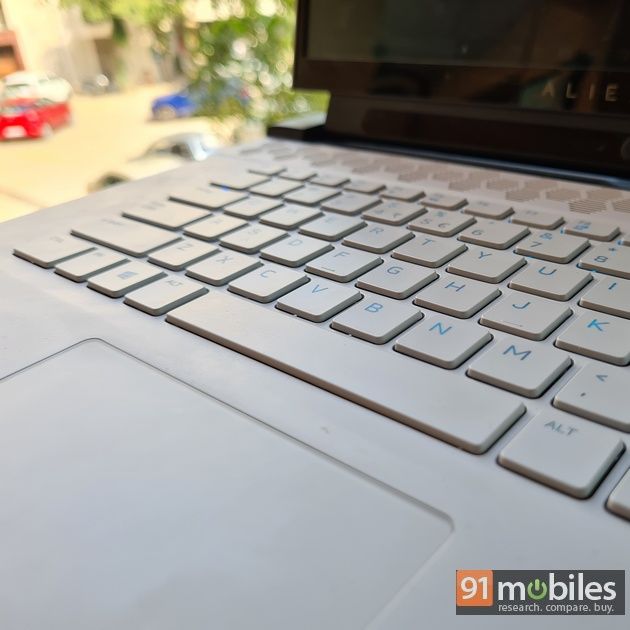
As for the trackpad, the size is kind of a bummer as I have seen a much larger surface area on competing products. To its credit, the trackpad sits flush with the body of the laptop and carries the same matte finish. The response and latency from the trackpad are also quite good but with the high-end hardware packed inside the laptop, you are bound to use a separate mouse for better usage so the limited area of the trackpad is of little consequence.
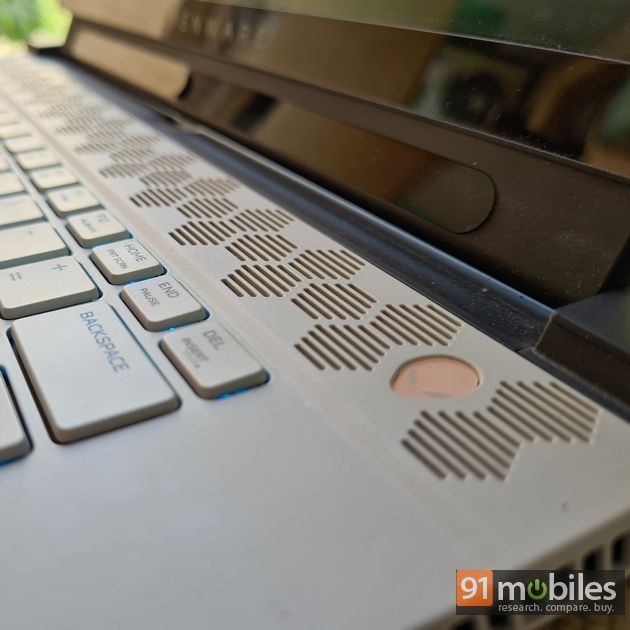
Performance and battery
The Alienware M15 R3 packs in the latest computing and graphical hardware available in the market today, but the pricing and configuration options are skewed and limited. For example, the version I’m currently reviewing has the hexa-core 10th-gen Intel i7-1070H processor but it can only be paired with the NVIDIA RTX 2070 GPU and not the latest RTX 2080. To get that you will have to shell out an eye-watering Rs 3,39,990 which will bundle in the octa-core Intel Core i9-10980HK, something which is frankly unnecessary as most computing needs can be accomplished with the i7 CPUs. The starting Rs 1,99,999 model gets you an i7 processor but you will have to settle for an underpowered GTX 1660Ti with 6GB of VRAM. It is prudent to point out that for around the same price the Lenovo Legion 7i provides you with an RTX 2070 GPU and a 10th-gen i7 CPU.
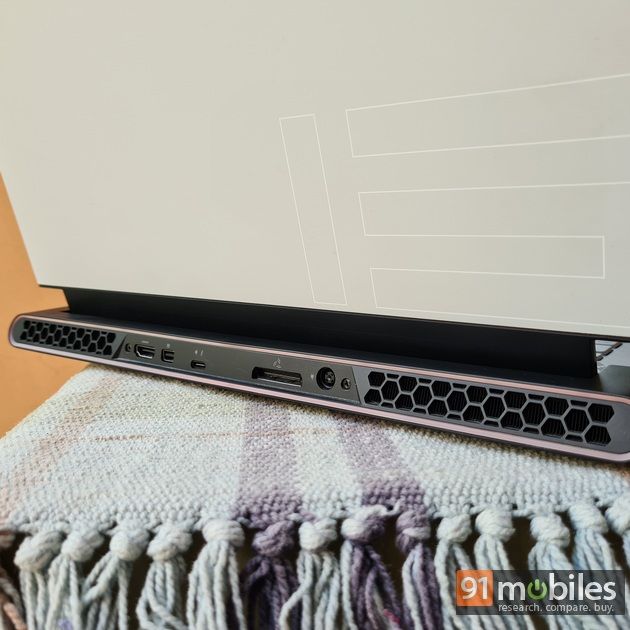
Right then, performance. Well, it is what you would expect from the Intel’s 14-nm Comet Lake H-series lineup, which is currently at the pinnacle of processing prowess unless the more compact 4000-series AMD Ryzen 9 can make an entry or Intel’s 11th-gen Tiger Lake CPUs are introduced in the country. Multi-threading in the i7 processors helps distribute tasks more effectively and consume less power. For purposes of normal day-to-day usage, such as opening Chrome, editing documents, opening PDFs, downloading files and others, the M15 R3 works blazing fast as expected. For storage needs, the laptop has a 1TB NVeMI SSD and 16GB of DDR4 RAM. On benchmarks, the laptop gave back fairly decent scores of 1,232 and 6,131 for Geekbench 5’s multi-core and single-core scores respectively. Running PCMark 10 gets you an idea of how good a PC is for normal day-to-day usage and the M15 R3 got a score of 4,864 which is slightly on the lower side while CineBench R20’s test yielded an average score of 3,031.
However, the Alienware lineup is known for its graphical prowess and I ran a couple of my favourite games to try and test said prowess. I started off with a couple of low-intensity titles such as Counter-Strike: Global Offensive, Valorant and Call of Duty: Warzone. All the games ran on the highest graphics settings and managed to peak at a good 120-135 fps. For more challenging tasks the Shadow of the Tomb Raider and Far Cry 5 were the most worthy options and the laptop delivered 71 and 68 fps at highest settings respectively. However, all these games had to be downgraded from the original 4K resolution down to 1080p. You see, while the standalone RTX 2070 is capable of pulling off 4K gaming, for the GPU to fit inside a thin chassis of a laptop, a MaxQ architecture has to be adopted. Long story short, it can’t draw as much power and dissipate as much heat and this reduces the graphic rendering capability significantly. As such at full 4K resolution, the Shadow of the Tomb Raider was pulling an average frame rate of 17fps. This is why for gamers it would be best to get the FHD and 300Hz display option. Thermal outputs are plenty on the device but even still the laptop can run hot at nearly 98 degrees at the peak of gaming. Overclocking the GPU is possible in the Alienware Command Cente but it is not recommended. I usually set my profile for performance mode instead of balanced to get the best experience. On 3DMark’s Time Spy Test the device scored 7,113 which is on par with the ability of the RTX 2070 MaxQ.
A small word in as well for the speaker system on the M15 R3 which is quite good. You will get a two-way woofer and tweeter along with a ‘Smart amp woofer’ technology for increased bass. The speakers do get reasonably loud and can be heard clearly even in a noisy room but only when the laptop is kept on a solid, flat surface.
The Alienware M15 G3 has a sizeable 86Whr battery that is bundled with a huge 240W adapter. For the purpose of gaming, the charging adaptor is key to get the best experience. As a standalone device without a power backup, the huge battery in the laptop is not capable of lasting very long even if you are not doing strenuous tasks such as video editing. The device, set at half brightness and power conservation mode, lasted for about 2 hours before shutting down. For charging, the device takes about 1 hour and 45 minutes to get from 0 – 100 percent.
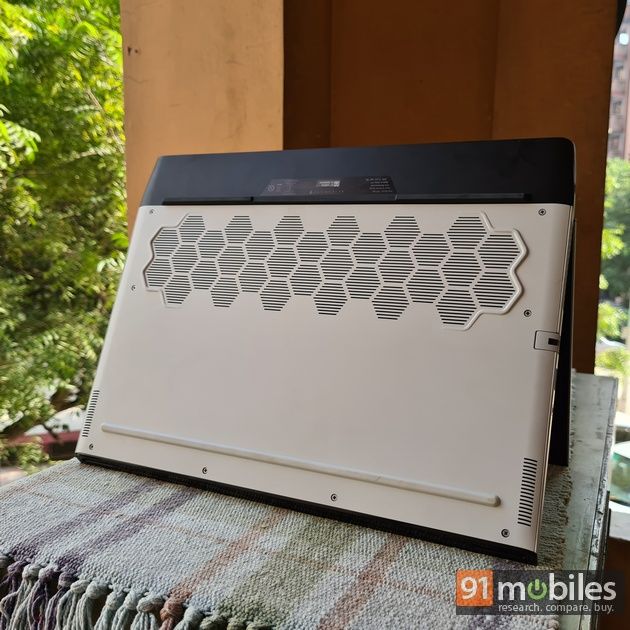
Verdict
If there was an award for the best-looking laptop of 2020, you are looking at the top contender with the Alienware M15 R3. Going with the looks is also heavy-duty hardware including best-in-class CPU and GPU options along with one of the best displays you are going to see in the laptop world. However, with great components comes a big price tag and boy, is the M15 expensive. In comparison the Lenovo Legion 7i is priced at Rs 1,95,990, and offers pretty much the same configuration (CPU, GPU, RAM, and storage). The difference is that the Legion 7i has a 144Hz display instead of the 300Hz panel seen on the M15 (there is no 4K OLED option for the Legion). MSI’s GS66 Stealth also offers all the same internals at a price point of Rs 2,54,990 and this includes the 300Hz display. There are choices to be made for sure but the only way you go for an Alienware M15 R3 is if you want the high colour accuracy of the 4K OLED panel for doing heavy-duty creative work. For gaming, there are cheaper options available on the market.
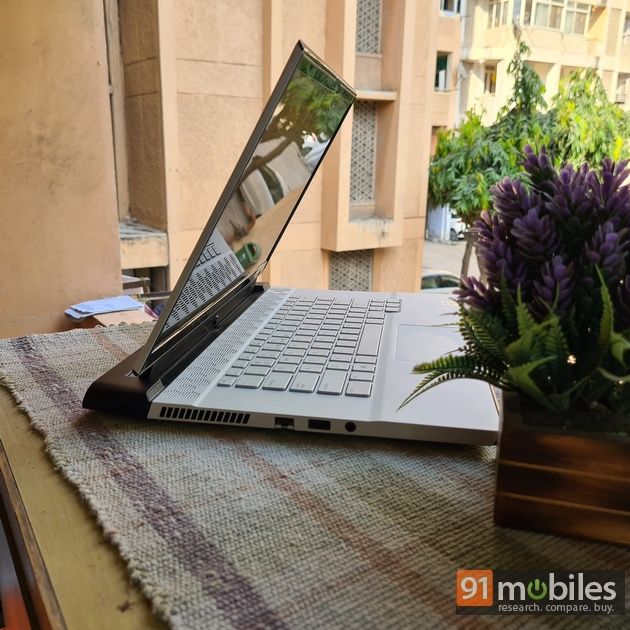
Editor’s rating: 3.5 / 5
Pros
- Great looks
- Solid performance
- Best-in-class 4K OLED display
- Speakers are decent
Cons
- Limited configuration options
- Thermals are mismanaged
- Pricey
from 91mobiles.com https://ift.tt/3ltsctc
Post a Comment